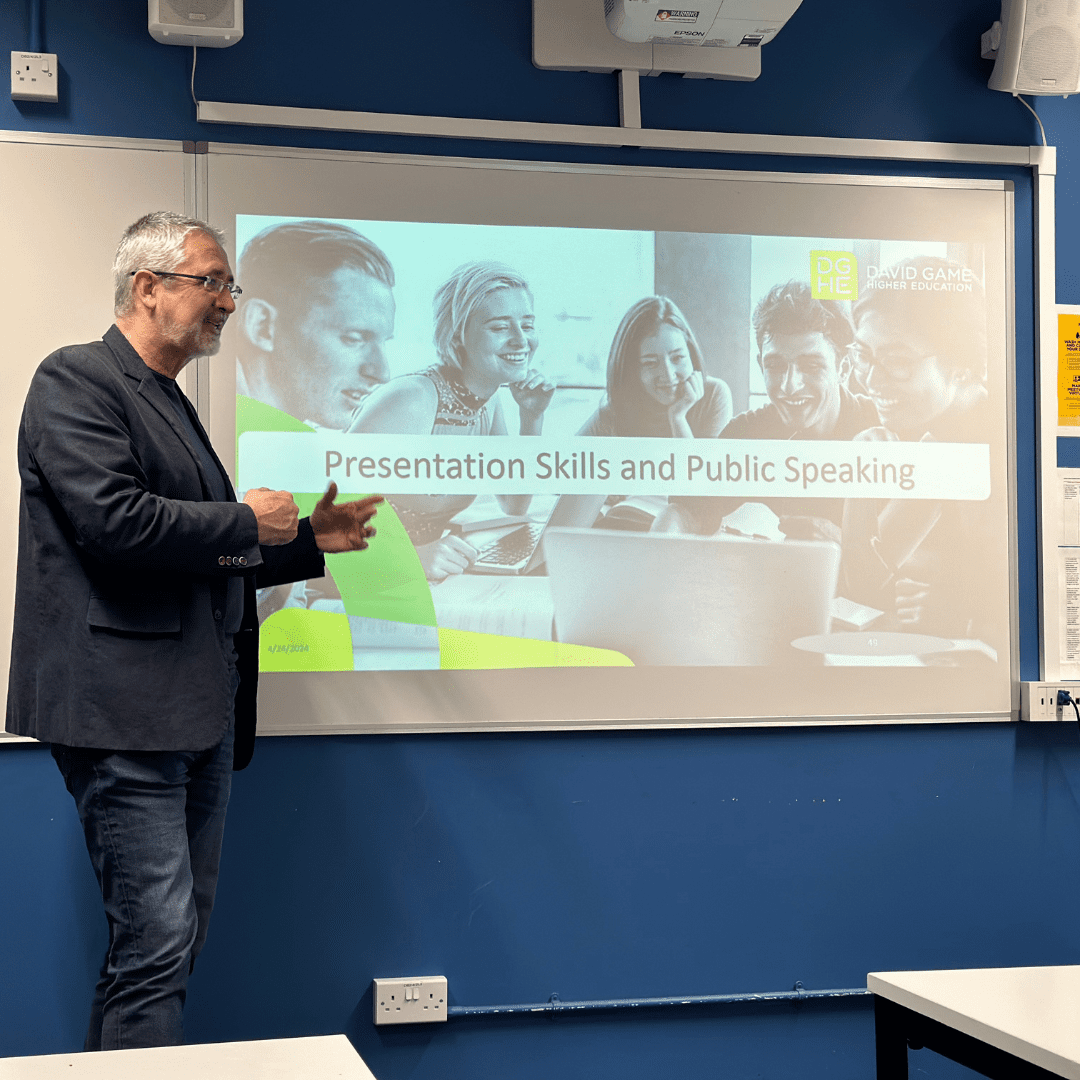
Speak Like a Pro: Lessons Learned at Professor Rob McCusker’s Public Speaking Workshop
Posted on 28/05/24
Public speaking: two words that strike fear into the hearts of many! Whether it’s nerves about facing a crowd or the eerie silence awaiting your first words, the anxiety can be real. But what if I told you that our recent public speaking session left visitors to DGHE feeling confident and excited about public speaking?
Earlier this month, we offered the public a workshop led by our esteemed Professor Rob McCusker, who is a distinguished figure in the field of criminal justice and international crime policy, and also DGHE’s Head of Academic Delivery & Development. For those who couldn’t join us, here’s a recap of his golden rules for mastering public speaking:
1. Start with Humour
Professor McCusker suggests beginning your talk with a subtle joke (it could even be funny)! Humour not only captures the attention of your audience but also breaks the ice, making you feel more at ease.
2. Pace Your Words
One effective way to eliminate filler words like ‘um’s’ and ‘ahhs’ is to speak slowly. This not only helps in maintaining your calm but also ensures that your audience can follow along without difficulty.
3. Steady Presence
Instead of pacing back and forth, stand still. Let your words carry the energy and emotion. A steady, confident stance projects authority and helps keep the audience focused on what you are saying.
4. Ditch the full script
Keeping brief notes can make your talk appear more natural and engaging. This approach allows for more eye contact and interaction with your audience, making the experience more personal and impactful.
5. Never Say You’re Nervous
Admitting nervousness can sometimes reduce the speaker’s perceived confidence and credibility. Instead of vocalizing any anxiety, focus on conveying confidence and calmness. The audience typically can’t gauge your nerves unless you point them out, so keep a positive, assured demeanour. Practising relaxation techniques before speaking can also help you maintain composure.
7. Look People in the Eye
Direct eye contact can be a powerful tool in public speaking. It helps establish a connection with the audience, making your presentation more engaging and personal. Try to look at different parts of the audience throughout your talk to involve everyone in the room. This practice not only makes listeners feel included but also boosts your perceived confidence.
8. Don’t Block the Screen from View
If you’re using visual aids or a presentation, be mindful of your position relative to the screen. Make sure not to stand in a way that blocks any part of the screen. Moving aside or adjusting your position ensures that all audience members can see your visuals clearly, which helps maintain their interest and enhances understanding of your material.
How helpful is that?
DGHE has begun rolling out a new Outreach programme that partners with local organisations and schools, and gives members of the public opportunities to experience what it’s like studying at the higher education level. If you’re interested in organising a future session with us, please get in touch by emailing marketing@dghe.ac.uk
Other News
Filter news
- Content
- Events
- News
- Students
- Uncategorized

